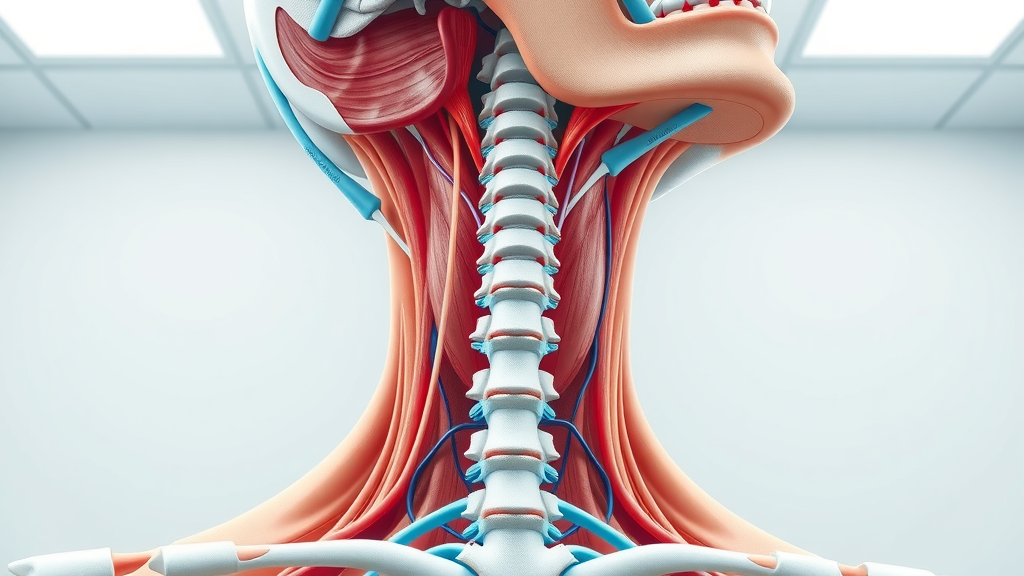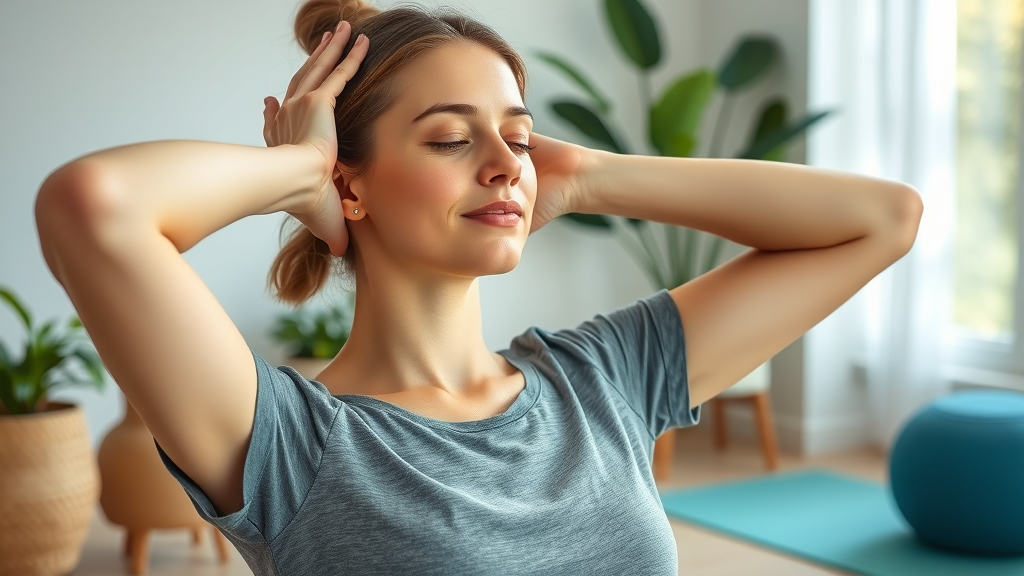Startling fact: Nearly 70% of adults experience neck pain symptoms at some point in their lives, but not everyone knows which warning signs could signal a serious neck problem. Failing to recognize and properly address these symptoms can lead to long-term health issues, loss of mobility, and even dangerous complications. Read on to uncover the key neck pain symptoms you should never ignore—and how to respond for your health and safety.
A Startling Peek: Why Recognizing Neck Pain Symptoms is Essential
“Nearly 70% of adults experience neck pain symptoms at some point in their lives. Knowing which symptoms to ignore—and which could signal serious issues—can make all the difference.”
Neck pain symptoms are among the most common health complaints worldwide. Despite being prevalent, many people dismiss warning signs, often attributing discomfort to simple muscle strain or poor posture. However, some symptoms may point to more serious neck problems, ranging from pinched nerves to infections or spinal cord conditions.
Understanding which neck pain symptoms to take seriously is crucial. Whether it's persistent pain and stiffness, muscle spasm, or radiating pain extending into the arms, being proactive can protect you from larger issues like nerve root compression or spinal cord damage. Let’s explore how to identify these critical symptoms and make informed decisions for your long-term health.

What You'll Learn About Neck Pain Symptoms
- The most common neck pain symptoms and what they mean
- When neck pain symptoms may indicate a serious neck problem
- How to distinguish normal neck pain from dangerous neck problems
- Preventative tips for ongoing neck pain issues
- When and how to seek professional help
Understanding Neck Pain Symptoms: The Big Picture
Defining Neck Pain, Neck Problems, and Neck Pain Symptoms
Neck pain symptoms can range from mild discomfort to severe, debilitating pain. This spectrum makes it difficult for many people to decide when symptoms are benign muscle soreness or signs of a more serious neck problem. Most neck pain originates from muscles, nerves, discs, vertebrae, or other structures in the cervical spine. Pain may be localized or radiate to surrounding areas such as the upper back or shoulders.
Other neck problems may involve nerve root irritation, spinal cord compression, or systemic medical conditions. Typical neck pain symptoms include pain and stiffness, muscle spasm, or tingling and numbness in the arms or hands. Understanding the vocabulary around neck pain empowers you to communicate symptoms more effectively and seek targeted pain relief or professional assessment when necessary.
Why You Shouldn’t Dismiss Persistent Neck Pain Symptoms
It's easy to ignore mild neck pain symptoms, hoping they’ll resolve on their own. While minor pain can result from poor posture or prolonged physical activity, persistent neck pain—especially when lasting more than a week or worsening over time—may signal a more dangerous neck problem. Dismissing or delaying help when red-flag symptoms emerge can lead to complications such as permanent nerve damage, spinal cord issues, or chronic pain conditions that resist standard pain relief strategies.
Recognizing the difference between everyday neck pain and symptoms of a more serious issue is vital. For example, symptoms such as sudden coordination loss, limb weakness, or severe, unrelenting pain rarely improve with self-care and often require immediate medical attention. Staying alert to these patterns can help prevent progressive or irreversible neck problems.
Common Misconceptions Around Neck Problems
Many individuals believe that all neck pain symptoms stem from stress, sleep issues, or overuse. While these are valid triggers, some people underestimate the risk of underlying conditions like a pinched nerve, spinal stenosis, or even infection. Misidentifying these symptoms can lead to a delay in pain relief and adequate intervention.
Another misconception: neck soreness in younger adults is always minor. However, even young, active people can develop significant neck problems, especially if pain follows trauma or is associated with neurological symptoms. Don’t ignore symptoms simply because you’re fit or otherwise healthy. If your neck pain symptoms persist or include numbness, fever, or unusual weakness, talk to your doctor as soon as possible.

Key Signs and Neck Pain Symptoms You Should Never Ignore
- Severe or worsening pain and stiffness
- Radiating pain down arms or into shoulders
- Tingling, numbness, or weakness in hands/arms
- Sudden loss of coordination or balance
- Headaches associated with neck pain
- Swelling, fever, or unexplained weight loss
If you notice any of the above neck pain symptoms, it’s important not to dismiss them. Severe pain that increases over time can be a warning sign of degenerative disease or a significant neck problem. Radiating pain, for example, may indicate a pinched nerve or nerve root issue, demanding targeted pain relief and possibly urgent intervention.
Neurological symptoms—such as tingling, numbness, or weakness—rarely resolve without proper diagnosis. Sudden problems with balance or coordination might mean your spinal cord is at risk, requiring prompt evaluation to prevent permanent damage. And if neck pain is coupled with fever, unexplained weight loss, or swelling, underlying medical conditions like infection or cancer should be ruled out by a qualified professional.
Top 5 Causes of Neck Pain Symptoms and Neck Problems
| Cause | Typical Symptoms | Seriousness | When to Seek Help |
|---|---|---|---|
| Muscle Strain | Pain & stiffness, mild spasm, worse with motion | Usually mild | If pain lasts >1 week or limits daily function |
| Pinched Nerve | Radiating pain, tingling/numbness in arms, weakness | Moderate – Severe | If weakness, hand function declines, or worsening |
| Degenerative Disc Disease | Chronic pain, stiffness, "grinding" sensation | Can worsen over time | Progressive or persistent symptoms; after age 40 |
| Trauma/Injury | Sudden pain after accident, possible numbness | Potentially severe | Immediately after injury or if neurologic signs |
| Infection | Pain with fever, swelling, malaise, rapid onset | Severe, urgent | If fever, rapid progression, severe symptoms |
Understanding these common causes empowers you to respond appropriately. For example, a pinched nerve or degenerative disease often requires medical imaging and specialty care, while muscle strain may improve with self-care. Always err on the side of safety if your neck pain symptoms don’t match typical patterns or if new or severe signs appear.

When Neck Pain Symptoms Suggest a Bigger Neck Problem
Identifying Red Flags: Which Neck Pain Symptoms Require Immediate Medical Attention
Not all neck pain symptoms demand urgent care, but certain warning signs should prompt immediate action. Sudden numbness, loss of strength, arm or leg weakness, or dramatic loss of coordination indicate potential pressure on the spinal cord or nerve roots. Likewise, a sudden, severe headache with neck pain could signal an aneurysm or meningitis—rare cases, but potentially life-threatening.
Fever, night sweats, severe swelling, or unexplained weight loss along with neck pain symptoms may signal infection or cancer. If pain follows a traumatic injury, such as a fall or car accident, evaluating for spinal cord injury or unstable fracture is crucial. Never delay seeking medical assistance if these symptoms arise—timely treatment can prevent permanent disability.
Relationship Between Neck Pain Symptoms and Underlying Diseases
Some medical conditions like rheumatoid arthritis, ankylosing spondylitis, or certain infections begin their course with subtle neck pain symptoms. Over time, pain and stiffness may progress and become associated with systemic features such as joint aches, skin changes, or general malaise.
Persistent or unusual neck pain symptoms may also be the earliest warning for autoimmune diseases or infections such as meningitis. If pain is coupled with fever, confusion, or stiff neck (the inability to bend the neck forward), seek medical help right away. Early recognition and intervention offer the best chance for full recovery without lasting neck problems.
Understanding Pain and Stiffness in Relation to Serious Neck Conditions
While muscle spasm and mild pain are often benign, certain types of stiffness—especially if new, severe, or limiting movement—warrant further investigation. Progressive pain and stiffness sometimes point to degenerative disc disease, spinal stenosis, or even spinal infections.
When combined with symptoms like weakness, numbness, or changes in walking and coordination, pain and stiffness may signify compression of the spinal cord. Detecting these “red flag” symptoms early often allows for more effective pain relief, targeted treatment, and, in serious cases, prevention of lasting disability.
In-Depth: Serious Conditions Linked to Neck Pain Symptoms
Cervical Disc Disorders and Pinched Nerve
Degenerative disc disease and herniated discs are among the top causes of serious neck pain symptoms. When a disc bulges or ruptures, it may compress nearby nerves, leading to a condition commonly known as a pinched nerve. Symptoms include radiating pain, tingling, numbness, or even muscle weakness in the shoulders, arms, or hands.
If symptoms persist or get worse, nerve root compression may lead to permanent changes in hand function, loss of coordination, or spinal cord involvement. Prompt diagnosis—using MRI or other imaging—can be crucial to preserve nerve function and minimize long-term neck problems.
Serious Infections and Inflammatory Neck Problems
Infections like meningitis, abscesses, or osteomyelitis can start with neck pain symptoms before progressing to fever, headache, or neurological impairment. These conditions require immediate medical assessment and treatment; delays can be life-threatening.
Similarly, inflammatory diseases such as rheumatoid arthritis or lupus may cause insidious neck pain that gradually worsens. These “silent” causes of pain and stiffness often need long-term management with medication, lifestyle adjustments, and sometimes physical therapy to reduce flares and protect the spinal column.
How Trauma and Injury Can Cause Severe Neck Pain Symptoms
Neck trauma—such as whiplash from a car accident or a fall—can damage ligaments, discs, or even the spinal cord. These injuries may result in sharp pain, limited mobility, neurological symptoms, or sometimes emergency complications.
Prompt evaluation is always necessary following trauma to rule out fractures, dislocations, or nerve injuries. Ignoring neck pain symptoms after injury may convert a treatable issue into a chronic disability. Early intervention—sometimes including pain relievers, immobilization, or surgery—offers the best chance for pain relief and a full return to normal activity.
Common Neck Pain Symptoms Versus Dangerous Neck Problems
Everyday Neck Muscle Soreness and Muscle Spasm
Not all neck discomfort is reason for concern. Common causes like overworked muscles, awkward sleep positions, or emotional stress can result in sore neck muscles and mild muscle spasm. These symptoms include dull ache, stiffness, and increased sensitivity to touch, but usually improve with simple pain relief strategies and home care.
Regular gentle movement, stretching, and good posture habits can address many mild neck pain symptoms. If pain responds to over-the-counter pain relievers or physical therapy, worry is usually minimal. However, track changes in symptoms—especially if soreness develops into sharp pain, numbness, or persistent stiffness.
Warning Signs When Muscle Spasm Indicates a Serious Neck Problem
At times, what feels like a simple muscle spasm may mask a larger neck problem. If spasm is severe, associated with neurological symptoms, or doesn’t improve in a week with self-care, deeper structural issues like a slipped disc or herniation should be considered.
In rare cases, persistent or recurrent muscle spasms may reflect spinal cord compression or an inflammatory disease. Persistent severe spasms—especially those limiting mobility or causing secondary symptoms—warrant immediate assessment by a healthcare professional to rule out underlying problems that could become permanent if ignored.

How to Seek Diagnosis and Treatment for Neck Pain Symptoms
Assessment: When to See a Doctor
Not all mild neck pain symptoms require a trip to the doctor. But if symptoms linger for more than a week, grow more intense, or involve tingling, numbness, fever, or unexplained weakness, set an appointment promptly. Additionally, pain following trauma/injury or impacting daily activities should always lead to professional evaluation.
Sudden, severe neck pain—especially if accompanied by headache or difficulty moving arms/legs—can indicate a medical emergency. Trust your instincts: if you feel something is seriously wrong or if the pain is unlike anything you’ve experienced before, it’s best to err on the side of safety and seek medical advice.
Which Tests Help Diagnose Neck Problems?
When you consult your doctor about neck pain symptoms, expect a thorough physical exam and neurological assessment. To better visualize bones, discs, and nerves, medical imaging like X-rays or MRI may be ordered. For suspected nerve involvement, electromyography (EMG) or nerve conduction studies can pinpoint the location and extent of damage.
Lab tests may also be requested to rule out infection, autoimmune diseases, or inflammatory arthritis—especially when neck pain symptoms involve fever or systemic signs. Using these diagnostic resources helps your care team target pain relief while also treating any underlying neck problem for long-term health benefits.
Navigating Specialty Care for Chronic Neck Pain Symptoms
If your neck pain symptoms persist despite basic care, or if a serious neck problem is detected, a referral to a specialist—such as a neurologist, orthopedic surgeon, or physical medicine doctor—may be appropriate. Specialists can use advanced tests and treatments, including targeted injections, physical therapy, or surgical consultations to address complex problems.
Chronic or recurrent pain may benefit from a multidisciplinary approach, combining physical therapy, medication management, and lifestyle modifications. Work with your healthcare team to devise an individualized plan, keeping pain relief and prevention at the forefront.
Pain Relief and Management of Neck Pain Symptoms
Self-Care Tips for Mild Neck Pain
- Gentle stretching for pain relief
- Good posture habits
- How to use heat and cold therapy
For the majority of mild neck pain symptoms, home remedies offer effective and safe pain relief. Gentle neck muscle stretches and range-of-motion exercises can prevent stiffness and muscle spasm. Prioritize good posture, especially when working at a computer or using mobile devices, to reduce stress on the cervical spine.
Alternating heat and cold packs can soothe inflammation and provide comfort for tender muscles. Over-the-counter pain relievers or non-steroidal anti-inflammatory drugs (NSAIDs) may also help. However, avoid prolonged inactivity; gradual movement ensures blood flow and helps relieve pain faster. If pain does not improve or worsens, contact your healthcare provider.
Medical Treatments: When and What to Consider
If self-care strategies do not alleviate neck pain symptoms, medical intervention may be necessary. Depending on the diagnosis, treatment options include physical therapy targeting the neck muscles, prescription muscle relaxant or pain medication, and, in some cases, corticosteroid injections for severe inflammation or nerve compression.
For degenerative or structural problems, surgery may be indicated if pain and dysfunction are severe or unresponsive to other treatments. Always discuss the risks, benefits, and alternatives with your healthcare provider. Remember, early diagnosis and targeted treatment provide the best results for lasting pain relief and prevention of chronic neck problems.

Prevent Neck Pain: Everyday Strategies and Expert Tips
- Monitor your posture throughout the day
- Exercise to strengthen neck muscles
- Avoid muscle spasm by reducing repetitive strain
- Ergonomic adjustments for work and sleep
- Relaxation techniques to reduce pain and stiffness
Prevention is key to avoiding ongoing neck pain symptoms and neck problems. Build awareness of your posture—especially when staring at screens or driving for long periods. Incorporate movement and neck-strengthening exercises into your regular physical activity. Use ergonomic furniture and pillows to support the natural curve of the cervical spine.
Avoid repetitive strain by taking frequent breaks and changing positions during extended activities. Relaxation techniques—like deep breathing, yoga, and mindful stretching—help prevent muscle spasm and promote blood flow, reducing the risk of chronic pain and stiffness.

People Also Ask: Neck Pain Symptoms
What is the best way to relieve neck pain?
Answer: Effective pain relief for neck pain symptoms often involves a combination of gentle stretching, good posture, over-the-counter medications, and in some cases, physical therapy. For acute episodes, alternating heat and cold packs can help manage pain and stiffness. Consulting a healthcare professional is recommended if neck pain symptoms persist or worsen.
How do I know if my neck pain is serious?
Answer: Neck pain symptoms may be serious if they are accompanied by severe headaches, loss of coordination, numbness or weakness in the arms/hands, or if pain results from trauma. If you're unsure about your symptoms or if they worsen, seek medical attention.
What disease starts with neck pain?
Answer: Some diseases, like meningitis, rheumatoid arthritis, or certain infections, can begin with neck pain symptoms. If neck pain is accompanied by fever, severe headache, or stiffness, seek immediate care.
What are the top 5 reasons for neck pain?
Answer: The top 5 reasons for neck pain symptoms include muscle strain, degenerative disc disease, pinched nerve, trauma/injury, and infections or inflammatory diseases affecting the neck.
FAQs: More About Neck Pain Symptoms
- Can neck problems cause headaches?
- When should I see a doctor for neck pain symptoms?
- Do neck pain symptoms always indicate a severe condition?
- How long should neck pain symptoms last before seeking help?
Many people describe headaches and upper back pain as part of their neck pain symptoms. While not all neck pain signals a severe neck problem, be mindful of how long your symptoms persist. If they last more than a week or are accompanied by new symptoms, schedule a visit with your healthcare provider for diagnosis and guidance.
Key Takeaways: Recognize and Respond to Neck Pain Symptoms
- Promptly recognizing serious neck pain symptoms can prevent complications
- Understanding the difference between minor and serious neck problems is crucial
- Effective pain relief and prevention are possible with the right strategies
Conclusion: Prioritize Your Health—Don’t Ignore Neck Pain Symptoms
Always respect persistent or unusual neck pain symptoms. Taking action early ensures the best outcome for your health and mobility.
“Listening to your body and acting on concerning neck pain symptoms could save your health—and even your life.”
Take Action Now: Call Us for Help with Neck Pain Symptoms
- Call Us at 905-354-5153—Expert evaluation and compassionate care for all neck pain symptoms.
 Add Row
Add Row  Add
Add 



Write A Comment